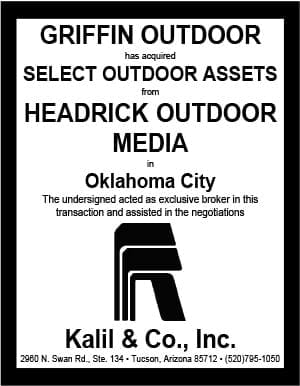
OUTFRONT CFO Matt Siegel had a wide ranging conversation with Oppenheimer’s Ian Zaffino at this week’s Oppenheimer Tech, Internet and Communications Conference this week. Some of the highlights.
How is OUTFRONT recovering from covid?
We reacted quickly on the cost side and the capital side. We raised capital. We fortified our balance sheet. We took some costs out of the business. We negotiated with a lot of our franchise partners to change our cost structure…We are seeing improvement. We’re seeing renewed traffic…Our billboard business revenue is picking up…two-thirds to three-quarters of our offices are now open again. We recently about a month ago opened our New York City offices…We guided investors that we would be down 50%…we came in close to that
Audience trends
On billboards we have proprietary metrics, we see industry metrics, we see google and apple and other things…on a national basis when you look across the country, traffic which we measure by cell phone data…is pretty much back to where it was pre-pandemic. There’s certain pockets that are higher, Chicago for example…New York is up into the low 80% range of where it was in February…Los Angeles is over 90% We think the issue in billboard of stay at home and lack of audience is pretty much behind up. Midtown Manhattan isn’t jumping. New York city business isn’t back to where it was…On transit a little bit of a different story…
New York Transit still down
At the peak pre-pandemic it was 5.5-6 million people a day. Now it’s 1.25-1.5 million people a day….Mass transportation is down and the audience hasn’t really returned yet. The studies we’ve seen in Asia and Europe say it takes longer for people to go back on…
Expense Cuts
The biggest expense savings was transit franchise expense. Transit is primarily a revenue share business. When revenue goes down expenses go down. That reduced costs by about $60 million…We made a number of headcount moves. Whether its salary reductions, permanent reduction in force…we reduced the costs in our real estate some by the revenue share…but we’ve also mitigated the real estate costs…and then also rounding up the usual suspects, travel, contractors, discretionary spend, conferences. We stopped all that…
Balance sheet steps during the pandemic.
We reached out and sold a convertible preferred to two large media investors to shore up our balance sheet. A gross $400 million with Providence Equity and Aeres Management…We followed that up with a high yield bond offering. Five year non-callable to maximize flexibility…We had drawn down our revolver $500 million. With the new cash we repaid that. We still have access to our full revolver and a little over $300 million of cash on the balance sheet. With over $1 billion of cash and committed liquidity we’re really in great shape.
On Acquisitions
I think there’s opportunities for consolidation and I do think financial distress will accelerate that. I haven’t seen any assets change hands yet. I think people are waiting…We think we’re in position where we can do an attractive acquisition. I’d like to think the multiple I would pay today is lower than the multiple I would have paid in January…I don’t think the bid ask has matched up. We’ve made a few outgoing phone calls to regional players that we know in areas where we’d like to get bigger in. We’re having conversations…Nothing to talk about. We did reengage with someone we had to walk away from in March…a more attractive multiple.
Insider’s take: We disagree with Oppenheimer’s Zaffino who said at one point in the conversation “some of the smaller guys out there are struggling a lot more.” Maybe small placed based and transit firms are struggling but the small and regional out of home firms Insider talks to have put the crisis behind them. They are mostly rural and mostly local and have escaped the fallout from national contracts cancelling. Thinking of selling? Now is not a good time to sell your out of home company if Siegel’s comments are reflective of the buy side of the acquisitions market.
[wpforms id=”9787″]
Paid Advertisement

















